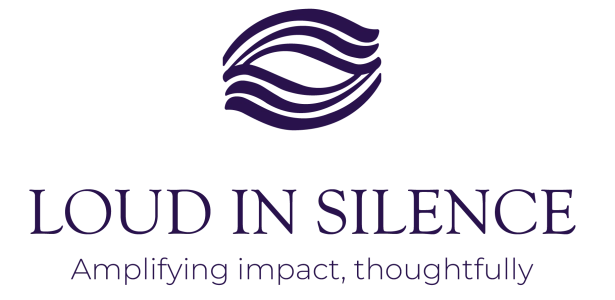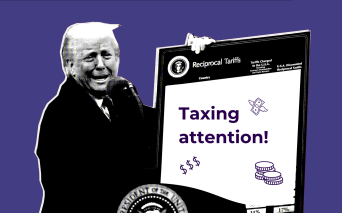Emotional Leverage: The True Deciding Factor
In every negotiation - from politics to marketing - the most powerful player isn’t the one who speaks the loudest.
It’s the one who strikes the right emotional chord at just the right time.
Just like the way Trump unveiled his new tariff policy in April 2025, opening with bold declarations like “Made in America” and “Protect American Jobs.”
It wasn’t just economic messaging. It was emotional leverage - targeted straight at American pride, especially among working-class voters.
To them, it wasn’t just a promise of growth. It was a message: You matter. I’m protecting you.
Toyota - Jessica Long’s Story: Right Moment, Right Emotion
In its 2021 Super Bowl commercial, Toyota didn’t mention product features.
No discounts. No sales talk.
They told the story of Jessica Long, a double amputee adopted from a Russian orphanage, who overcame immense challenges to become a Paralympic champion.
A quiet film. But it hit deep.
It didn’t just inspire hope and resilience - it aligned Toyota with a message far bigger than mobility: inner strength, perseverance, and humanity.
That’s what turned “Start your impossible” from a slogan into something personal, emotional, and unforgettable.
Emotional leverage: Triumph over adversity
Timing: During the global pandemic, when the world was quietly fighting personal battles
Result: 3 million views in 48 hours, thousands of organic shares—all from a single story.
Choosing the Right Emotion to Reach the Right Person
Every emotion is a door.
But not every door opens at the same time - or for the same person.
A campaign only becomes effective when it taps into something your audience is already wrestling with - a desire, a fear, a silent longing.
Let’s take a look at some emotional levers that have driven impact:
Choose Fear => Anti-smoking campaigns that visualize long-term health risks to trigger behavioral change.
Choose Joy => Coca-Cola’s “Open Happiness” spreads positivity and builds brand affection through light-hearted emotion.
Choose Nostalgia => Disney uses childhood memories to reconnect with audiences on a deeper level.
So - what emotion is your brand leveraging right now?
Is it enough?
Smart brands don’t just pick the right feeling for their target audience. They tailor it across markets.
They turn emotional negotiation into a cultural art.
Take Dove, for example. Dove doesn’t sell soap. Dove sells confidence.
In Western markets, the message is “You are beautiful just the way you are.” It celebrates individuality and self-expression.
In Asian markets, the tone shifts subtly toward pride in family and caretaking roles, honoring women not only as individuals - but as daughters, mothers, and pillars of the home.
Same product.
But the emotion is refined.
That’s the emotional intelligence every brand needs:
Not shouting to be heard,
But listening for what people truly need to hear - at the right time, in the right culture, and with the right heart.
The Art of Emotional Negotiation
Three Core Techniques to Craft Emotional Leverage
Modern marketing isn’t just about crafting insights or writing the perfect brief.
It’s about learning how to listen with your whole heart - to sense how your audience longs to be seen, felt, and understood.
Here are three foundational techniques to help you negotiate emotionally - with clarity, strategy, and care.
🔹 Researching the Emotions Waiting to Be Heard
You can’t knock on a door if you don’t know which feeling is locked inside.
Deep emotional insight doesn’t come from a single survey. It comes from quiet observation, active listening, and genuine conversations - where pain points, hidden desires, or unspoken contradictions begin to surface.
These are your real emotional levers - not what people say, but what they silently feel.
🔹 Choosing the Right Emotion - and the Right Moment to Enter
Not every emotion is yours to use. And not every moment is meant for storytelling.
Just like you don’t offer flowers at a funeral, don’t talk about “inspiration” when all your audience needs is safety and calm.
Emotional timing means stepping back, reading the room, and understanding when someone is ready to let you in.
🔹 Knowing When to Let Go
Emotional marketing is not emotional manipulation.
If you push too hard - if your campaign feels like it’s squeezing tears or exploiting fear - trust evaporates.
Sometimes, the most powerful thing you can do… is to pause.
Let your message breathe. Let it echo.
Because restraint isn’t weakness - it’s what makes a message stay with someone longer than noise ever could.
Case Study: When Emotion Wins - Biti’s and the Return Home
This is one of the rare Tet campaigns in Vietnam that succeeded not just once, but across multiple years. And its lasting power didn’t come from a massive budget - it came from a deeply strategic emotional design. Through the lens of the three emotional negotiation techniques, Biti’s approach stands out with impressive clarity:

A shot that Sơn Tùng MTP wore Biti's Hunter in MV Lạc Trôi (released on 1/1/2017)
🔹 Researching Emotional Insights:
Uncovering the silent inner conflict of young people during Tet.
Tet is traditionally a time for reunion.
But Biti’s didn’t build their campaign on the familiar insight of “everyone misses home during Tet.”
Instead, they discovered a more nuanced and arguably more relevant truth among their target audience:
For modern youth, "coming home" is no longer an automatic choice.
They’re standing at a crossroads between:
– The desire to travel far, explore freely, and assert their identity.
– And the responsibility to return, reconnect with family and tradition.
→ A real inner conflict rarely named aloud.
This is what we call a “latent emotional insight” - difficult to spot, but once struck, it resonates on a deeply personal level.
Biti’s didn’t just understand the insight.
They felt it.
🔹 Choosing the Right Emotional Entry Point:
Gently opening the door through curiosity, not confrontation.
Instead of using a tear-jerking storyline or moral obligation, Biti’s took a softer, more intriguing route:
“This Tet, are you #TeamGo or #TeamReturn?”
The question didn’t judge. It didn’t instruct.
It simply appeared - about 4 weeks before Tet 2017 - just as young people began asking themselves the same thing.
This was an emotionally smart entry point:
– It didn’t guilt-trip those who wanted to “go.”
– It didn’t appeal to duty, but to personal choice.
– Most importantly, it offered no ready-made answer.
The result?
Audiences filled the emotional gap with their own stories → creating genuine empathy and organic sharing.
Ending on a high note to preserve emotional gravity.
This may have been the campaign’s most brilliant move.
Biti’s didn’t try to close the sale at the emotional peak.
There was no loud call-to-action saying, “Buy our shoes this Tet.”
No awkward product placements.
No attempt to stretch the campaign into the Tet holiday just to milk its viral moment.
They let go when the audience felt most seen and understood.
And that’s what made the campaign memorable.
Because,
The more a brand’s message feels like a conversation, not a pitch, the more likely it is to be accepted.
And sometimes, letting the emotion speak does more work than any product shot ever could.
Four Core Principles of Emotional Negotiation
From Biti’s and many other successful campaigns, we can distill four key principles:
🔹 Authenticity
Emotion only carries weight when it’s real.
An emotional campaign that doesn’t come from the brand’s core values is just a performance, and today’s audience is far less forgiving of anything that feels staged.
🔹 Relatability
People connect when they see themselves in the story you tell.
Whether it’s insecurity, longing, or inner conflict, the more familiar the feeling, the easier it is for someone to open up.
🔹 Boldness
Brands shouldn’t shy away from difficult emotions or sensitive topics, as long as they approach them with empathy and respect.
When done right, courage leaves a lasting impression.
🔹 Storytelling
Nothing reaches the emotional core like a well-told story.
A real story - with characters, conflict, and transformation - stays with the audience far longer than any polished brand slogan.
A win-win Dialogue
It isn't about pushing someone to buy.
It’s about listening - really listening - to how they feel.
And putting an offer on the table that’s sincere enough to earn a “yes” from both sides.
When you tap into a quiet joy, a buried fear, or an unspoken dream, people open up.
Not because your product is the cheapest,
but because they feel seen. Respected. Understood.
And that’s when they choose you.
The brands we remember aren’t the ones that shout the loudest.
They’re the ones who told the right story at the right time.
And in that moment, marketing is no longer the art of persuasion.
It becomes the art of emotional reciprocity—
Where both brand and customer walk away with something that matters.
A soft conversation.
A mutual win.




